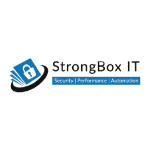List of Best Application Security Tools
Showing 10 of 41 productsPortSwigger Burp is a and versatile web security testing tool that has become an essential tool for cybersecurity professionals and developers alike. It offers a wealth of features and capabilities, allowing users to efficiently analyze and identify...Read PortSwigger Burp Reviews
AppsTec DMS, a powerful document management system designed to revolutionize the way businesses handle their digital assets. With its user-friendly interface features, AppsTec DMS streamlines the process of organizing, storing, and sharing documents,...Read AppsTec DMS Reviews
Kiuwan Code Security is a solution for identifying and preventing security vulnerabilities in your code. With advanced technology and customizable features, Kiuwan helps protect your applications from potential threats. Enhance your code quality and...Read Kiuwan Code Security Reviews
Appknox is a top-notch mobile security product designed to protect your apps from potential threats. We understand the importance of creating a secure digital environment, which is why our team has developed a unique solution that goes beyond traditi...Read Appknox Reviews
Devknox is a software that revolutionizes the way developers enhance their code security. With its advanced features and user-friendly interface, Devknox simplifies the process of identifying and fixing potential security threats. Say goodbye to vuln...Read Devknox Reviews
ImmuniWeb On-Demand - your one-stop solution for web application security testing. This powerful tool offers a comprehensive suite of features to identify potential vulnerabilities and protect your website from cyber attacks. With its user-friendly i...Read ImmuniWeb On-Demand Reviews
BKP365 is a solution for your online backup needs. With advanced technology and user-friendly interface, ease your worries about data loss with just a few clicks. Experience the convenience and peace of mind knowing your important files are always ba...Read BKP365 Reviews
SecOps is a software that combines traditional security operations with modern technology to detect, respond, and prevent threats in real-time. With its advanced capabilities and seamless integration, SecOps takes security to a whole new level, ensur...Read SecOps Reviews
NetFoundry offers a game-changing platform for businesses to securely and seamlessly connect their applications and data without the limitations of traditional networks. With NetFoundry, organizations can achieve global connectivity with ease, enabli...Read NetFoundry Reviews
Modshield SB is a solution for protecting your online platforms against cyber threats. With a powerful combination of advanced technology and expertly crafted features, Modshield SB provides the perfect defense for your digital presence. Say goodbye...Read Modshield SB Reviews
- What Is Application Security Tools?
- Top Reasons Why Businesses Need Application Security Tools?
- What Are the Top Key Features of Application Security Tools?
- What Are the Top Benefits of Application Security Tools?
- What Are the Steps to Choose the Right Application Security Tools?
- What Are the Types of Application Security Tools for Different Industries?
- What Are the Technology Trends for Best Application Security Tools?
- What Are the Deployment Options for Application Security Tools?
What Is Application Security Tools?
Application security tools refer to software programs specifically developed to safeguard applications against external risks, including hostile actors and data breaches. This particular program is employed to enhance the security of software applications by safeguarding them from potential hostile attacks and flaws.
Application security is utilized to safeguard an application from a multitude of potential threats and vulnerabilities. They have the capability to facilitate the identification and prevention of malevolent actors or malevolent code from infiltrating an application, in addition to aiding in the identification of vulnerabilities within the program's code and proposing methods to enhance its security.
Application security tools can safeguard apps against potential data breaches. The system possesses the capability to identify and report any instances of unauthorized access to user data, thereby notifying both the user and system administrators.
Additionally, they have the capability to facilitate the monitoring and regulation of user access to the program. In the context of operational activities, these tools can be employed to oversee the application for potential vulnerabilities, dubious behavior, or malevolent code, while also executing suitable updates to rectify any security concerns.
In general, the utilization of application security measures is crucial in safeguarding applications, regardless of whether they are employed for personal or professional objectives. Application security serves the purpose of safeguarding an application from potential security vulnerabilities, malevolent actors, and unauthorized access leading to data breaches.
Top Reasons Why Businesses Need Application Security Tools?
1. Application security tools offer the capability to identify, safeguard, and oversee potential risks and weaknesses within applications.
2. Application security solutions play a crucial role in enabling enterprises to engage in proactive analysis and identification of risks and potential security threats, with the aim of mitigating their impact on business operations.
3. Application security solutions are utilized by enterprises to evaluate the security of newly developed applications and effectively handle modifications made to existing applications, all while ensuring that their performance and availability remain unaffected.
4. Application security testing tools play a crucial role in the identification of potential security vulnerabilities present in an application's source code, as well as the underlying server and network configurations.
5. Application security solutions are capable of aiding businesses in the identification of dangerous code, including viruses, worms, and Trojans, that may be surreptitiously integrated within web-based apps.
6. Security tools are capable of detecting and mitigating SQL injection attacks.
7. Application security software is capable of identifying and mitigating cross-site scripting attacks.
8. The best application security tools play a crucial role in safeguarding sensitive and confidential data within enterprises, as they effectively mitigate the risk of illegal access, utilization, and alteration.
9. Application security technologies provide the capability of monitoring and alerting in real-time, facilitating the prompt detection of security threats.
10. Top application security tools enable enterprises to identify and immediately address malicious actions, hence minimizing potential consequences.
11. Application security technologies provide comprehensive visibility across a company, enabling the assessment of security status and identification of potential vulnerabilities.
12. Security technologies enable enterprises to maintain ongoing surveillance for potential vulnerabilities and promptly respond in order to mitigate the likelihood of a cyber attack.
13. Application security technologies are utilized to detect potential security vulnerabilities within a system prior to their manifestation as significant issues.
14. Application security technologies assist enterprises in promptly and economically detecting, evaluating, and resolving security problems.
15. Application security tools play a crucial role in ensuring adherence to industry and regulatory standards, thereby enabling enterprises to sustain a safe digital environment.
What Are the Top Key Features of Application Security Tools?
The top key features of application security tools include:
1. Identification of Security Vulnerabilities: Application security is utilized to actively monitor applications in order to detect and ascertain any potential security vulnerabilities. These vulnerabilities may encompass system misconfigurations, coding problems, and compromised authentication mechanisms.
2. Prevention of Exploits: The best application security tools technologies can notify administrators or execute automated responses upon the detection of malicious behavior. This measure aids in the prevention of exploits and enhances system security.
3. Security Hardening: Application security tools possess the capability to enhance the security of an application through the implementation of robust security policies, stringent password requirements, and various other control mechanisms.
4. Logging and Auditing: The best application security tools and technologies provide the capability to scrutinize logs to identify potentially malicious activities, hence enabling prompt notification of administrators in the event of any security breaches.
5. Remediation and Recovery: The top Application security tools provide the capability to expeditiously retrieve any data that may have been misplaced or hacked. In addition, they possess the capability to assist in the remediation process of the program, including the resolution of security vulnerabilities through the application of patches.
6. User Authentication and Authorization: Application security tools offer robust two-factor authentication and authorization options for users. This encompasses access control and authentication protocols, such as OpenID or SAML.
7. Malware Protection: Application security solutions are designed to identify and safeguard against various forms of malware threats, including but not limited to backdoor access attempts, data mining, malicious code injection, and phishing assaults.
8. Application Intrusion Detection: Application security is capable of monitoring the network for many forms of malicious actions, including but not limited to port scanning, intrusion attempts, and unauthorized access to data.
What Are the Top Benefits of Application Security Tools?
1. Increased Visibility: Application security technologies provide administrators with the capability to have a comprehensive understanding of the security-related actions occurring within a company. This provides administrators with a comprehensive comprehension of the situation, enabling them to make well-informed judgments concerning security vulnerabilities and implement appropriate remedial measures.
2. Detection of Vulnerabilities: Application security technologies play a crucial role in the identification and detection of prevailing security flaws and locations that are susceptible to potential attacks. This capability allows organizations to accurately identify and address problems before they escalate into significant risks.
3. Automation: The best application security tools can automate many security operations, including code scanning and analysis. This automation significantly diminishes the amount of time and manual effort needed to ensure the security of applications.
4. Compliance: Top application security tools play a crucial role in aiding enterprises to attain compliance with regulatory standards and industry best practices. By utilizing these tools, organizations may effectively mitigate security risks and enhance the overall security of their applications.
5. Prevention of Data Breaches: Application security plays a crucial role in mitigating the risk of data breaches by effectively thwarting hostile behaviors, including but not limited to SQL injection, cross-site scripting, and data tampering.
6. Cost Savings: Application security tools play a crucial role in mitigating the financial burden associated with addressing security vulnerabilities and data breaches.
What Are the Steps to Choose the Right Application Security Tools?
1. Analyze Application Security Threats: To effectively choose an application security, it is imperative for a business to conduct a comprehensive analysis of the application security dangers that are inherent to its IT infrastructure, as well as the potential ramifications that these threats may entail. This will facilitate the identification of the necessary tools for mitigating any potential dangers.
2. Evaluate existing tools: It is advisable for organizations to compile an inventory of their current security tools and ascertain their alignment with the organization's security requirements. This assessment will aid in determining the necessity of including supplementary tools or enhancing the functionality of current ones.
3. Research different security tools: After identifying the exact application security requirements, firms can do research on different security solutions to ascertain the most suitable ones that align with their demands. Organizations ought to prioritize many considerations, including cost, usability, range of features, third-party endorsements, and user feedback.
4. Compare security tools: After the identification of many security tools, a company should develop a comparative chart that delineates the advantages and disadvantages associated with each security tool. This will aid in the process of selecting appropriate tools.
5. Test the security tools: Organizations should do preliminary testing on a selection of security solutions under consideration before reaching a definitive conclusion. This will aid in guaranteeing that the security tool fulfills anticipated requirements and is in alignment with the organization's current IT architecture.
6. Choose the right security tool: Once the aforementioned processes have been carried out, a company may subsequently make a determination regarding the most appropriate security tools that align with its specific requirements. It is imperative for organizations to prioritize the frequent updating, monitoring, and testing of their technologies in order to achieve optimal security measures.
What Are the Types of Application Security Tools for Different Industries?
Application security tools are employed to guarantee the security of applications developed by various businesses, protecting them against potential attacks and weaknesses. A diverse range of application security exists, each designed to cater to the unique requirements of various businesses.
1. In the Financial Services Industry, the utilization of the best application security tools technologies, such as application security scanners and static analysis tools, is prevalent to identify and monitor security vulnerabilities at the code level. Penetration testing, web application firewalls, and real-time threat analytics are viable methods that can be employed to detect and promptly address real-time threats.
2. In the Healthcare Industry, application security techniques, such as static and dynamic analysis tools, are employed to conduct scans and identify vulnerabilities at the code level. Security Information and Event Management (SIEM) systems, along with application firewalls, offer a comprehensive perspective on potential threats and their corresponding countermeasures. Additionally, the utilization of threat intelligence solutions aids in the anticipation and mitigation of forthcoming attacks.
3. In the context of the Retail Industry, the utilization of application security technologies, such as application security scanners and static analysis tools, can prove effective in identifying vulnerabilities at the code level. Furthermore, the implementation of application firewalls, penetration testing, and web application firewalls can offer supplementary safeguards against malevolent cyber intrusions.
4. In the context of the Manufacturing Industry, the utilization of application security techniques, namely static analysis tools, can be employed to identify and mitigate code-level vulnerabilities. Furthermore, the implementation of hardware-level security solutions, the utilization of penetration testing, the integration of threat intelligence solutions, and the application of real-time threat analytics can offer supplementary layers of protection.
In general, top application security tools technologies are customized to meet the unique requirements of diverse businesses, and their selection is contingent upon the security vulnerabilities prevalent in each respective sector.
What Are the Technology Trends for Best Application Security Tools?
The prevailing technological trajectory in the realm of best application security tools is a shift away from conventional firewall technologies, with a heightened emphasis on cloud-based solutions. This encompasses strategies that utilize machine learning and artificial intelligence techniques to detect and analyze potential risks.
Furthermore, a multitude of tools are specifically designed to monitor and record API calls, as well as detect and analyze potentially harmful activities. Additional significant security methodologies encompass vulnerability scanning, static application security testing, sandboxing, and vulnerability management.
There is a growing emphasis on incident response and the role of threat hunters in identifying and apprehending harmful individuals.
What Are the Deployment Options for Application Security Tools?
The deployment choices for application security technologies exhibit variability contingent upon the unique characteristics of the application and the surrounding environment. In general, deployment can occur either externally or inside. The process of externally deploying application security measures include safeguarding applications from external network-originated threats.
This encompasses network-level firewalls, intrusion detection systems, and web application firewalls. These tools can do activity analysis and detect potentially harmful network traffic. The utilization of internal deployment of application security technologies serves the purpose of safeguarding applications from potential threats originating from within the network.
This encompasses many authentication mechanisms, such as multi-factor authentication, application permission levels, and additional types of access control.
Additional tools, such as malware protection, sandboxing, and endpoint security, can be employed to detect and thwart dangerous activities, as well as prevent unauthorized access to resources. The following are several prevalent deployment options for application security technologies. Alternative possibilities may be accessible depending on the particular demands of the context.










